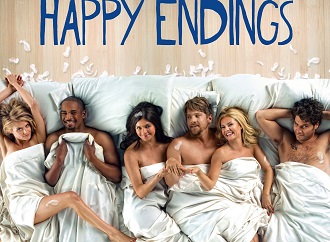For the first time in a long time, the Oilers are going to have a coach take the team for a second spin. Dallas Eakins will get a chance to re-think his past season, learn from his mistakes and re-deploy a roster subtended by his own continuity and learning. This, in Oilers’ land, is a rare feat of late.
As has been well documented, since Craig MacTavish resigned from the head coaching job with the Oilers after the 2008-09 season, the position has been little more than a lazy susan to a disinterested food consumer. As if without any purpose, Oilers’ management has spun the wheel, stopping it occasionally to pick up a can of mushrooms, or bamboo shoots, only when fate has insisted something, anything, be eaten.
Since the 08-09 season the Oilers have employed five head coaches: MacTavish; Pat Quinn (09-10); Tom Renney (10-12); Ralph Kruger (12-13); and, Dallas Eakins (13-?).
Often, we remark on how the lack of coaching continuity affects the players. “How can you expect anything from Sam Gagner, he’s had 5 different coaches! Five different systems! No wonder he’s all messed up in his own end!” is a common refrain. Without taking away from that line of argument, it is worth noting another benefit of coaching continuity: the coach himself learns and has a chance to improve.
The last time the Oilers had a coach take on a sophomore season, Tom Renney was the coach. Recently, the Renney years have been getting some much deserved revisionist history lessons. See this piece by Jonathan Willis and this one from David Staples.
One of the feathers in Renney’s cap is simply the fact that he benefitted from a year of mistakes and a second in which he could try and correct them.
The Renney Years
Extraskater has recently added the 2010-11 season to their staple of information. This gives us a chance to take a look at both of Renney’s years via the player usage charts extraskater provides. The idea being: usage charts give us a thumbnail sketch as to how a coach is using his players. It gives us insight into time on ice, quality of competition, zone starts and possession stats all in one quick, handy chart.
With the caveat that player usage charts offer only a limited look at coaching, let’s take a look at Renney’s two years as Oilers’ coach and see if we can glean anything about year-over-year learning.
RenneyOne (2010-11)
RenneyTwo (2011-12)
I think we can take away a few interesting nuggets from these charts.
1. In year one, Renney really clustered the quality of competition fairly evenly. With the radical exception of Strudwick and Reddox, the majority of the team is pretty evenly distributed in terms of the competition they face. In year two, you can see a clear diagonal line cutting through all the players from bottom left to top right.
This reflects a serious strategic change. Renney appears to be trying to give players with tough competition (the kid line of Nugent-Hopkins–Hall–Eberle) a break on the zone starts. And, concomitantly, he’s giving those who are getting easier competition much heavier zone starts.
All in all, it looks like Renney learned the value of manipulating his player usage year-over-year.
2. In year two, Renney looks to be in far greater command of which players (among the forwards) ought to have their zone starts optimized for offence (Eberle, Gagner) and which players can handle tougher zone assignments (Hemsky, Paajarvi). It looks an awful lot like Renney re-thought giving Eberle (as a rookie in 2010-11 no less) and Gagner such hard zone starts, while at the same time he discovered how reliable Hemsky and Paajarvi were in their own end.
3. While Hall played more with Eberle than any other player in the 2010-11 season, the 2011-12 usage chart show how the emergence of center Nugent-Hopkins led rather quickly to the successful formation of the kid-line as optimizable zone start darlings.
4. On the D front, the opposite seems to have taken place compared to the changes witnessed amongst the forward group. Whereas from year one to year two we see the forwards distributed more strategically, the opposite appears to be the case amongst the defensemen.
In year one you can see 3 sets of D-pairings fairly clearly distinguished based on their zone starts: D-zone pairing (Smid, Peckham); Neutral-zone pairing (Gilbert, Vandermeer); and, O-zone pairing (Foster, Strudwick). This is not to say that these were the common pairings throughout the season. Rather, it is to note that Renney deployed his defensemen in 2010-11 with some kind of zone start strategy built around how he perceived the strength of his team.
In year two, however, all the defensemen (Smid, Petry, Gilbert, Whitney, Sutton, Potter, Peckham) are tightly clustered around roughly the same zone start (Potter has a slight push). This looks to me like Renney wasn’t entirely comfortable giving his defensemen specific zone-related roles. It’s hard to say if this represents a regression of his learning, or rather a kind of learned caution on his part.
What to Expect from Eakins
The point of this exercise isn’t to say Eakins will learn this or that, or change his deployment in any given manner. Rather, it is to show how much a coach can change from their first to their second year at the helm of a team.
This quick glance at Renney’s year-over-year usage suggests that coaches can and do learn a lot over the course of a season, followed by an off-season of contemplation. It is highly likely that Eakins will too. We should expect change.
[adsanity id=1808 align=alignnone /]Add The Sports Daily to your Google News Feed!









